Related Content
Content
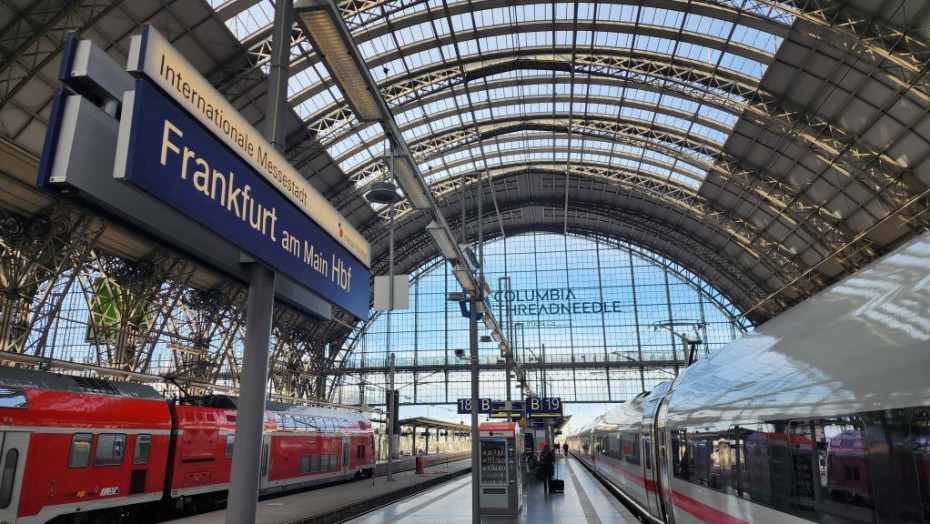
Using the major Stations in Germany (the Hauptbahnhofs)
Includes insights to buying tickets and how to use the departure information to find your train
Share
Welcome to ShowMeTheJourney's GUIDE to using large stations in Germany.
It should you help have a stress-free trip by revealing what facilities you can expect to find at the station and by explaining how to find your train.
Of course not all German stations look identical, but what contributes to making Germany a country in which it is a pleasure to travel by train, is that there is relatively little difference in how each major station functions.
Once you've got used to how the departure info works etc, you can be confident of finding your way to your train, no matter which major station you will be using.
What is a hauptbanhnhof?
The main central stations in German cities are always known as ‘Hauptbahnhofs’ which is often abbreviated to 'hbf' - this naming convention is consistently used in every city/large town.
In German cities anything but 'hbf' in a station name indicates that the station is NOT the main, city centre station.
Using the zones:
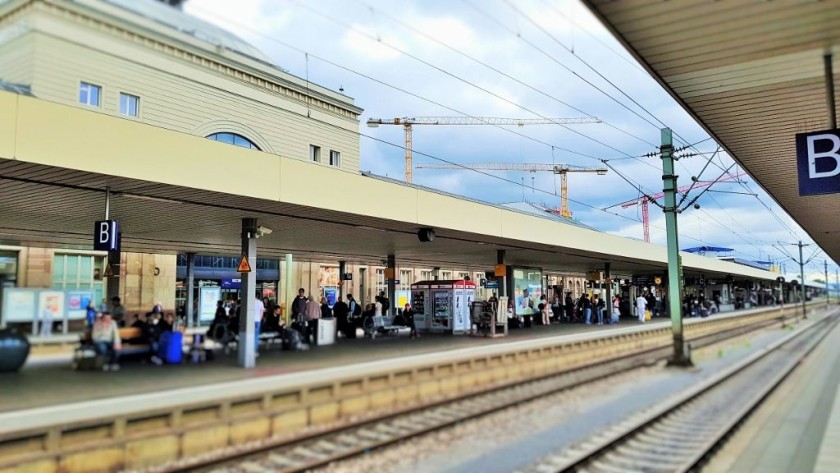
The gleis (platforms/tracks) at the hauptbahnhofs (main stations) are usually divided into zones; they always are at non-terminal stations, the B zones are visible in the above image.
You can use the electronic and paper information on the gleis (platforms/tracks), to work out in which zone you should wait for easy boarding into a train.
This specific zone info is nearly always ONLY available on the gleis and not in the main departure hall, because it isn't shown on the main departure screens.
So make your way to the gleis and THEN work out which zone you should wait in for easy boarding.
What is a Reisezentrum?
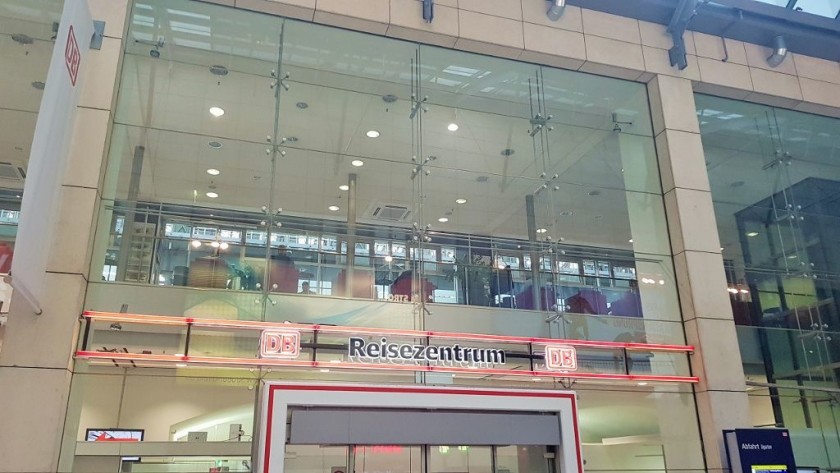
A Reisezentrum is an advance travel desk that is housed within any hauptbahnhof.
You can use them to book tickets in person if you want to travel at a future date; and avoid the longer queues that can build up at standard ticket counters
Reisezentrums also sell tickets and reservations for most international trains across Europe - Thalys train services are a key exception.
Train services that can be booked at a Reisezentrum desks include trains which DON'T travel to/from Germany.
So Reisezentrums can be a great resource if you're following a Eurail or Interrail itinerary, particularly because they don't charge booking fees!
So you can avoid the booking fees payable on the Eurail and Interrail online reservation services; and/or the booking fees payable when arranging reservations at stations in Belgium, Switzerland and The Netherlands.
Using the signage:
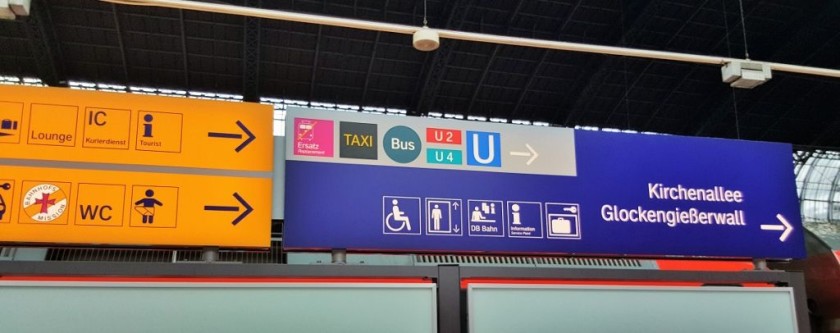
The signage at German stations is a mix of blue and yellow signs and you need to look at both in order to navigate around the station.
The logic behind this has proved elusive, but amongst the facilities on the yellow signs will be the toilets (WCs), the DB 1st class lounges, car hire desks and the lost property office.
The blue signs point the way to left luggage, the ticket desks, Reisenzentrum reservation desks and the info desks
Will elevators be available?
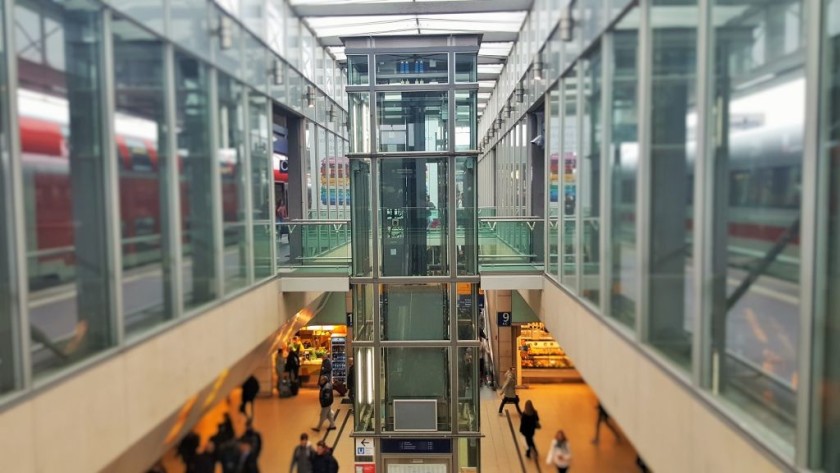
The majority of the gleis (tracks/platforms) at the non-terminal hauptbahnhofs, can be accessed by lifts/elevators, in addition to escalators and stairs.
Using the elevators when arriving by train:
When arriving by train, these lifts on the gleis (track/platform) can be some distance from the escalators/stairs, so take your time if you want to use a lift.
Don’t assume that there isn’t one available because everybody else is heading down the stairs.
The lift might be behind you or passed the stairs and escalators.
Using the elevators when departing by train:
When departing by train from a non-terminal hauptbahnhof, use the signs and maps in the main departure hall, to work out where the lifts up to the gleis (tracks/platforms) are.
They can be a tad hidden, many stations have main passage ways that lead off under the tracks from the main departure hall, but often these don’t have lifts.
Instead they can be located in the secondary passage ways, which can be located to the left or right of the main passage.
Availability of food/drink:


You won’t have to go hungry at a hauptbahnhof, they all have multiple food/drink outlets serving a wide range of cuisines; some, including Koln, Munchen and Nurnberg, have dedicated 'food courts'.
Though 'fine-dining' establishments are less common.
The take-away sandwich rolls can be particularly excellent and most will be labelled, so you can make a good guess at what you need to ask for.
Though pick up a coffee etc before you head for the gleis (platform/track) that your train will be leaving from.
The food/drink facilities on the gleis are much sparser than in the main station buildings.
How to find your train:
This info should remove much of the stress of using a hauptbahnhof for the first time.
1: Working out which gleis (platform/track) your train will be departing from:
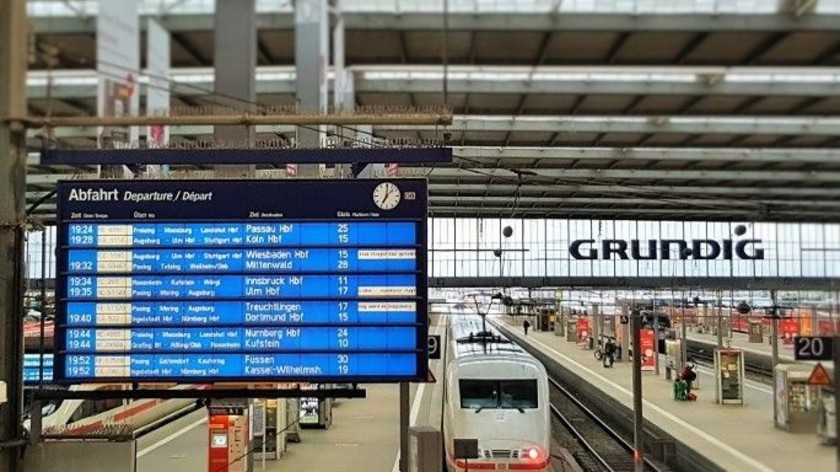
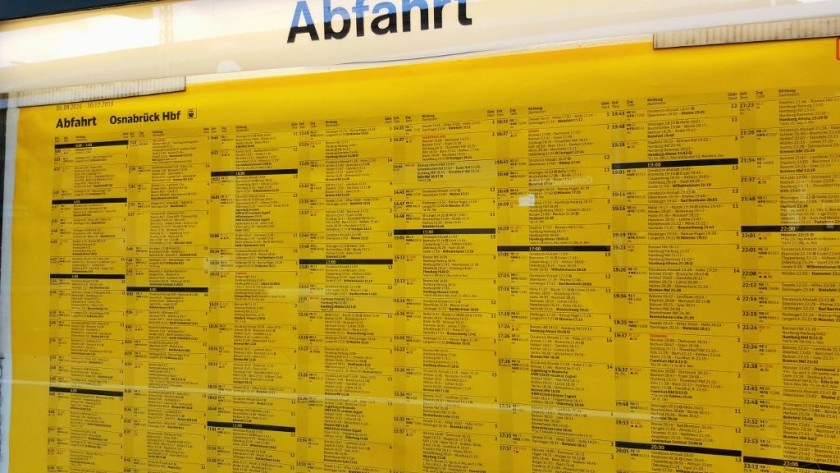
Every hauptbahnhof will have at least one large electronic blue departure board that shows the details of subsequent departures.
Although the information on these screens won’t include every station that a train will be calling at.
In additional to electronic information displays that can be seen on the concourses, the stations have yellow paper departure (Abfahrt) posters.
They list every train departing from a particular station that day in consecutive order and show which gleis (platform/track) each train will (should) be leaving from.
At stations with frequent departures, these posters can be particularly useful as they will show departures that aren't yet shown on the main departure screens.
These Abfahrt posters also feature more stations that a train will call at than the blue departure screens.
So if you can’t see the station you’re heading to on the main departure screens, check the posters.
However, when train schedules are being altered, due to works on the line etc, the information on the electronic screens, supersedes the information on the departure posters.
These yellow ‘Abfarht’ sheets are particularly useful if you will be taking a Regio train service.
Check the arrival time at your destination because some Regio trains can be much faster than others, so a later departure can overtake an earlier train, and actually arrive first.
2: Using the 'Zone' information:
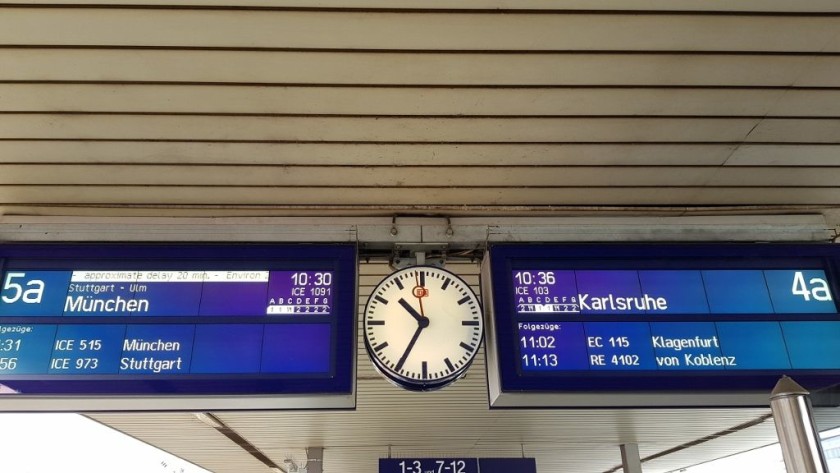
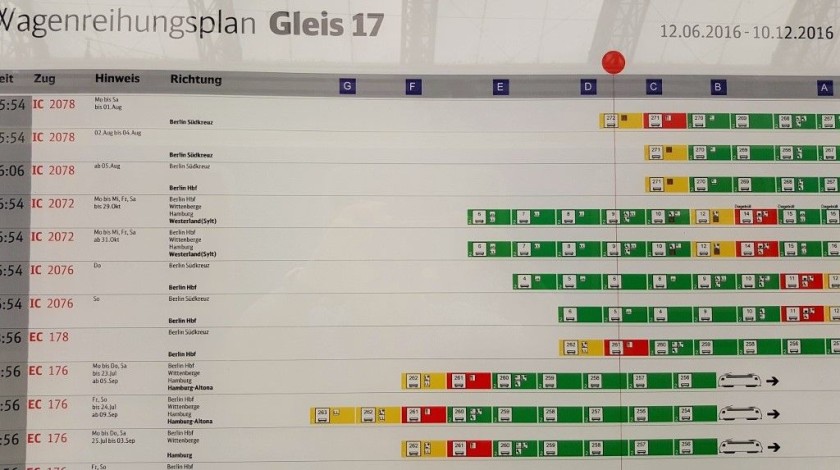
The gleis/platforms are split into zones that are marked by letters; this zone information is normally* only available on the platforms/gleis.
It is not usually shown on the departure screens that can be seen in the station buildings/concourses. (*Hamburg Hbf is an exception).
The electronic departure screens on each specific platform/gleis (pictured below) show the formation of the next train to depart.
So you can use them to check in which zone the 1st and 2nd class coaches of the train will be located, when the train arrives.
There will also be a poster sheet on the platform the Wagenreihungsplan, which will show the formations of the express trains that will depart from that specific platform every day.
If you have a reservation then this poster will show in which zone each specific coach on a train departure SHOULD be located.
Should; because it's not unusual for trains to be back-to-front - and if this is at the case, a specific coach in which your reservation is located, will be some distance from where you have waited on the platform/gleis.
1st class can also be at the opposite end of the platform/gleis to where you are waiting.
The red circle indicates in which zone of the platform/track/gleis you are located.
Look out for changes to Schedules:
Look out for any scrolling white text on an electronic departure screen on a gleis (platform/track), it can be alerting passengers to changes to the normal schedule, particularly delays.
Delay information is translated into English, but the information can also include a different final destination to the norm, or whether a train will be arriving back to front.
If you can’t make sense of this information, ask someone, it can be too important to ignore.
This scrolling white text can be also be alerting travellers to the fact that a train may be arriving back to front, meaning that 1st coaches will be at the opposite ends of the gleis (platforms/tracks) to that shown on the Wagenreihungsplan.
We also recommend checking out this fabulously detailed GUIDE to understanding the departure info at German stations
Unlike the departure screens, the station announcements, including news that a train will be arriving back to front, are in German only
If you have a seat reservation:
Take these four steps to board your train:
1. Every individual train departure has specific number and this number will be printed on any reservation.
So you can match the train number on the reservation with the train number that will be shown on the electronic information displays.
If you can’t see the station you’re heading to on the departure screens, be guided by the train number on your ticket, the train with that number will be calling at your station.
2. Look for the number of the gleis/track that the train will be leaving from and make your way to it.
If you want to use a lift, don’t assume that you’ll find it in the main passage way that leads to the trains, so check the signage carefully.
3. Check your ticket to find the ‘wagen’ (coach) number in which your ‘sitzplatz’ (seat) will be located.
4. When you arrive on the gleis, seek out the Wagenreihungsplan poster.
Your train will be listed on it, and it shows each individually numbered coach on each train, and in which zone the coach will be located, when the train arrives.
Then check the electronic departure screen on the on the gleis (platform/track) BEFORE heading to the zone, in which your coach will be located.
If there is any scrolling white text, ask a fellow traveller or station staff what it is pertaining to
It may be indicating that the train will be arriving back to front, thereby contradicting the information on the Wagenreihungsplan
If you will be changing trains:
Before exiting the gleis (track/platform) that your train will have arrived at, check the yellow Abfahrt posters that will be on the gleis.
It will show all subsequent departures not just from that particular gleis (platform/track) but the entire station.
So if you’re lucky, you’ll be able to remain on the same gleis (track/platform) for your next train.
If you need to transfer to another gleis (track/platform), confirm the details of your connecting train on the electronic departure screens.
Guides to Germany's busiest rail stations:
Look for a journey guide
Other guides to German rail travel
Please support ShowMeTheJourney
This second version of ShowMeTheJourney is exciting and new, so we are genuinely thrilled that you are here and reading this, but we also need your help.
We’re striving not to let anything get in the way of providing the most useful service possible, hence a facility has been set up with DonorBox which can be used to support the running costs and make improvements.
Instead of advertising or paywalls, your financial support will make a positive difference to delivering an enhanced service, as there’s a lot of ideas which we want to make happen.
So if you have found the info provided here to be useful, please go here to say thank you.
The other rail station guides:

Simon Harper
I wanted to share my passion for train travel and explain how anyone can take the fantastic journeys I have taken.

This is one of more than 100 train travel guides available on ShowMeTheJourney, which will make it easier to take the train journeys you want or need to make. As always, all images were captured on trips taken by ShowMeTheJourney.
This second version of ShowMeTheJourney is exciting and new, so we are genuinely thrilled that you are here and reading this, but we also need your help.
We’re striving not to let anything get in the way of providing the most useful service possible, hence a facility has been set up with DonorBox which can be used to support the running costs and make improvements.
Instead of advertising or paywalls, your financial support will make a positive difference to delivering an enhanced service, as there’s a lot of ideas which we want to make happen.
So if you have found the info provided here to be useful, please consider saying thank you.


